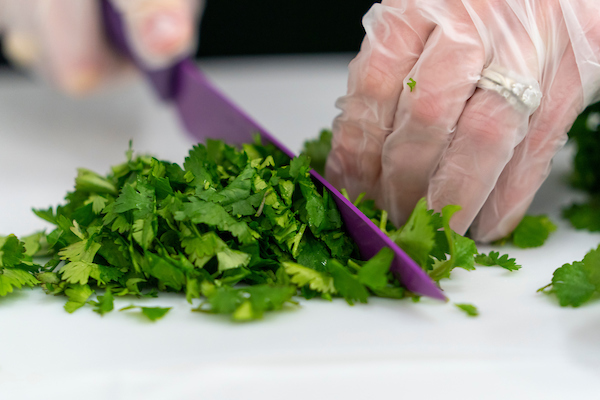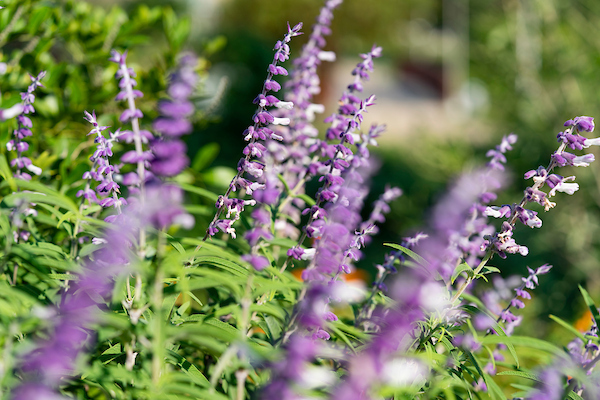Herbs are a great, easy-to-grow, multi-use addition to any garden.
Herb gardens are also the perfect way for beginning gardeners to develop their green thumb.
Joe Masabni, Ph.D., Texas A&M AgriLife Extension Service small-acreage horticulturist in the Texas A&M Department of Horticultural Sciences, Dallas, shared some tips to find success planting and growing herbs in Texas.
“Herbs are great because you can plant them in limited space,” he said. “Whether it’s a decent-sized pot or planter on an apartment patio or a 10-square-foot raised bed or section of your garden, herbs provide edible, fragrant and ornamental qualities. They are also favorites of butterflies and other beneficial pollinators.”
Grow herbs you like
Every garden should include plant varieties you enjoy eating and using in different ways. Herb gardens are no different.
Parsley, cilantro, basil, rosemary, thyme and mint are all easy-to-grow herbs that are great additions to a range of recipes. Masabni said watercress, dill and fennel are also low-maintenance herbs that are a great “fresh” addition to salads, dressings and other recipes.



Beginners should start simple with varieties they will use in recipes and drinks, and advanced gardeners should expand their herb selection.
“Herbs are great, nutritious ingredients, and having your own fresh herbs adds to the experience and taste,” he said. “I highly encourage people to try Asian, African and Mediterranean drink and food recipes because learning to grow them, use them in various ways and preserve them is the trifecta of good gardening.”
Getting herbs started
Gardeners can buy starter plants at retailers and nurseries or start from seed. Masabni said starting herbs from seed can be tricky because they need more attention as they germinate and reach the first-leaf stage.
Need more advice about herb gardening?
Contact your local AgriLife Extension agent for local tips and herb varieties for you.
He encourages gardeners to reach out to AgriLife Extension county agents or Texas Master Gardeners in the area to talk about specific herb varieties that may perform better under local conditions.
To start plants from seed, Masabni recommends sprinkling seeds in a starter container or the prepared location. Then sprinkle potting mix or sandy soil over the seeds and water them in. The key is to keep the soil moist until plants emerge and reach the first leaf phase. Then you can dial back the waterings.
Herbs need sun and a little water
Herbs like sunny, well-drained locations, Masabni said. Afternoon shade is good, especially in the dog days of summer, but plants need sun. They do well in sandy loam soils but will need some potting mix or compost in heavier soils.
Once herbs are established, they need watering but prefer to be on the dry side. Herbs in a garden may need a soaking once per week, maybe more during arid summer conditions, Masabni said, while plants in a pot may need to be watered daily in extreme heat and sun.
“Most herbs have a Mediterranean origin, so they are drought tolerant, but they do need water,” he said. “Giving them a break from the afternoon sun during the summer heat also helps keep their leaves tender and tasty, so a shade cloth to block 30% of the sun works well.”




Prevent insect, animal pests
Beyond monitoring the plant’s watering needs, Masabni said there are pests like bugs, worms and rabbits to watch out for. Some herbs repel insects and animals, but bugs can eat leaves and suck plants of nutrients, while rabbits and deer can eat plants to the ground.
For bugs, Masabni said to use any organic pesticide spray or insecticidal soap. If animals are nibbling plants, you will need to block their access with a screen or fence.
“My best advice is to give them a little attention each day, so you can prevent major problems,” he said.
Protect prize herbs from freeze
Aside from water and some protection from pests, Masabni said harvesting and/or trimming herbs will keep growth fresh, so use them.
Later in the season, prized perennial herbs might need additional protection from a killing freeze – temperatures below 10 degrees. Potted plants can always be brought inside or placed in a protective area. For outdoor herbs, Masabni recommends covering plants with a tarp or blanket, then placing an insulating layer of hay/straw, compost or dirt on top of the covered plant.
“With proper water and maintenance, you should be able to grow everything,” he said. “Herbs are pretty resilient. Follow these tips, and you should have good success.”





